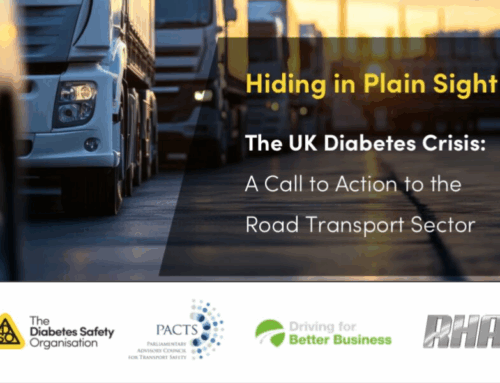This week, we hear from David Somers of Road Skills Online on lack of sleep and why the sleepiness and fatigue it causes is so dangerous for your drivers.
If you manage drivers, you need to be sure they only drive when fit to do so. Your organisation’s driving for work policy is the ideal place to detail what you expect of your drivers in this regard, and what support they can expect from you in return.
Sleep is vital to road safety
Adults need between seven and nine hours of sleep per night in order to remain functional and healthy. Yet according to a recent YouGov survey, half of Britons believe they do not get enough sleep, and one in three typically gets six hours or less. Driver e-learning provider Road Skills Online says drivers underestimate the dangers of driving after too little sleep, and has produced posters to encourage fleet drivers to optimise their sleep quality.
MD, David Somers says: “Up to 30% of collisions involve fatigue. This is an issue everyone must take very seriously to protect themselves and everyone else on the roads. In a 2018 survey of 4,000 HGV drivers by Unite, a staggering 29% admitted to having fallen asleep at the wheel.”
In a recent case, a 38-year-old driver was found guilty of death by dangerous driving when his truck collided with a police car killing an officer. The driver had a history of falling asleep in monotonous situations.
Why is a lack of sleep dangerous?
- Our brain is washed free of toxins during sleep, ensuring that neural pathways remain functional. Our body also heals and maintains our organs during sleep. Sustained periods of too little sleep have profound impacts on our health, and raise the risk of serious conditions such as stroke or dementia.
- Too little sleep lowers our IQ, and slows processing, attention, working memory and reaction times. We literally do not think as well, and our tendency to make mistakes grows.
- Acute or chronic sleep deprivation can make unwanted sleeping more likely – particularly if you are bored or passive. This makes tired drivers very vulnerable to drowsiness behind the wheel, or microsleeps where the brain flickers in and out of consciousness. This is extremely dangerous.
- Fatigue is also possible even after sufficient sleep. Fatigue, as opposed to sleepiness, is the product of long stints of boring or repetitive work and it also impairs judgement, awareness and reactions. The best cure for this kind of fatigue is to take a break, with some exercise and social interaction.
- Night shifts are problematic as the human body is designed to sleep at night, so collisions are typically higher during the early hours of the morning. It can also be harder for people to get good quality sleep during the day. Typically shifts starting between 8pm and midnight have been shown to have the most negative impact on sleep and performance.
How to ensure good quality sleep
- Drivers should have a sleep routine. This helps the body and brain to wind down, increasing melatonin, the substance which helps us fall asleep. Drivers should try to sleep at a regular time, avoid caffeine late in the day, reduce the light, and avoid bright screens for an hour before sleeping.
- If drivers sleep in hotels or their vehicle, they should plan a safe and quiet location, as far from traffic noise and bright light as possible.
- As an employer, you must also ensure you adhere to regulations set out in UK driving for work laws regarding drivers’ hours and duty time to minimise the risks of driver fatigue.
Sleep disorders
Sleep disorders take many forms but are very prevalent. Up to one third of the population has insomnia at some point, according to the NHS.
One recent French study showed that up to 20% of the general population had signs of sleep apnoea but only 3.5% were diagnosed. Middle-aged and overweight men are at higher risk than younger or thinner people.
Narcolepsy is also highly under-diagnosed and can present in far more subtle ways than one might think. Frequently falling asleep, involuntarily, when bored, watching a movie or as a passenger in a vehicle, or being reliant on high levels of caffeine can all be indications of a significant sleep disorder. Drivers suffering from such behaviours should be checked by a doctor.
Read Road Skills’ blog for more information on the need for sleep and download their poster to display at your drivers’ workplace.
Employers’ legal responsibilities – driver fatigue
Managers need to continually think on how to evidence the fact that a driver has been shown or trained in terms of their responsibilities, which includes the importance of fitness to drive and fatigue. The Driving for Better Business Driving for Work Policy Builder will help employers and managers ensure they have a legal and compliant driving for work policy.






